Exoplanets, or planets outside our solar system, can be truly bizarre. From planets made of diamond to an exoplanet that looks like the Eye of Sauron from Lord of the Rings, the weirdness of these distant worlds is truly remarkable. The universe is a vast and mysterious place, and scientists have recently discovered some of its most peculiar and distant planets. Here are 10 of the Weirdest exoplanets, or planets outside of our solar system, ever discovered.
10- HAT-P-11b
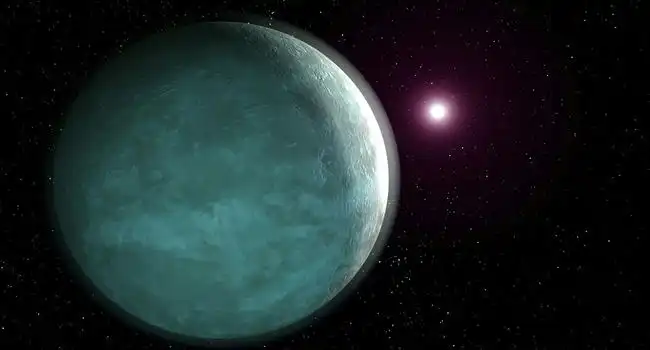
Photo Credit: NASA
HAT-P-11b is one of the strangest exoplanets ever discovered. It is almost four times the size of Earth and eight times as massive. It orbits a cool, orange star in the constellation Cygnus every four and a half days. Its atmosphere is composed mainly of hydrogen and helium. It has an abnormally low density, making it one of the lightest known exoplanets. HAT-P-11b is incredibly hot, with temperatures reaching up to around 900 degrees Celsius. The planet is tidally locked to its star, meaning one side always faces the star, while the other remains dark. It experiences extreme weather, with a huge temperature difference between the day and night sides.
9- KELT-9b
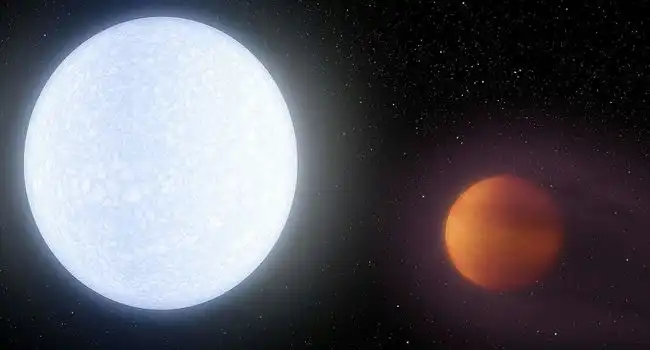
Photo Credit: Wikimedia
KELT-9b is one of the weirdest exoplanets ever discovered. It is three times hotter than any other known exoplanet. Its surface temperature is around 4,600 Celsius or 8,300 Fahrenheit. It is so hot that molecules like water and carbon dioxide can’t exist on its surface. KELT-9b is also extremely close to its star, orbiting it in just 36 hours. The planet is also losing its atmosphere to its star, which is dragging it closer and closer. KELT-9b is also extremely massive, weighing in at nearly twice the size of Jupiter. Its star, KELT-9, is also one of the most massive stars ever discovered. This planet is one of a kind and truly remarkable.
8- TrES-2b
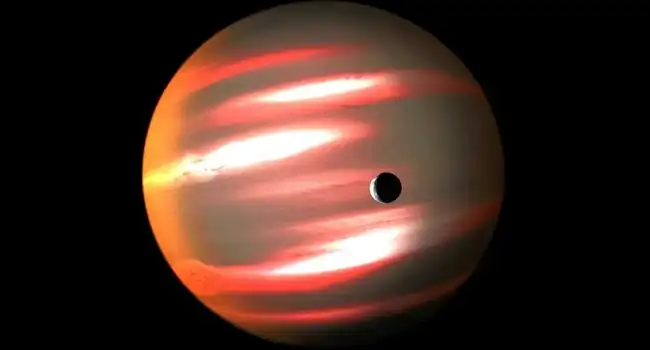
Discovered in 2006, TrES-2b is one of the weirdest exoplanets known to us. It is located 750 light years away from Earth. This planet is three times the size of Jupiter and has a temperature of 1,800 degrees Fahrenheit. It reflects almost all the light that hits it, making it the darkest planet known. It is so dark that it makes the sky look like a starless night. TrES-2b is part of a binary star system and orbits its parent star every three days.
The planet’s atmosphere consists mostly of hydrogen and helium. It has a mass of seven times that of Jupiter, making it one of the densest exoplanets. Its density also makes it one of the hardest planets to study. Despite its dark appearance, TrES-2b is incredibly hot, making it one of the hottest exoplanets known. It is believed that its extreme heat is due to the star it orbits, which is much brighter and hotter than our Sun.
7- WASP-17b
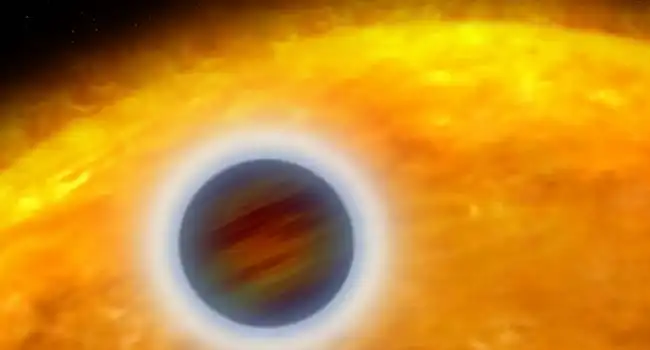
WASP-17b is an exoplanet like no other. It orbits a star in the opposite direction to its orbit around the star. This baffling phenomenon defies the laws of physics. It has a mass three times that of Jupiter and is the only planet known to travel in a retrograde orbit. Its orbit is highly elliptical, taking it up to 8 times further from its star than Mercury is from our Sun. It’s also incredibly hot, with temperatures reaching up to 2000K.
Its atmosphere is dominated by helium, and its dayside has temperatures of up to 2200K. The nightside, however, is much cooler, at around 1000K. This strange exoplanet is also unusually large and puffy, with a radius twice that of Jupiter. This means it has an incredibly low density, much lower than any other known planet. Its low density is thought to be caused by the extreme heating from its star.
6- Kepler-78b
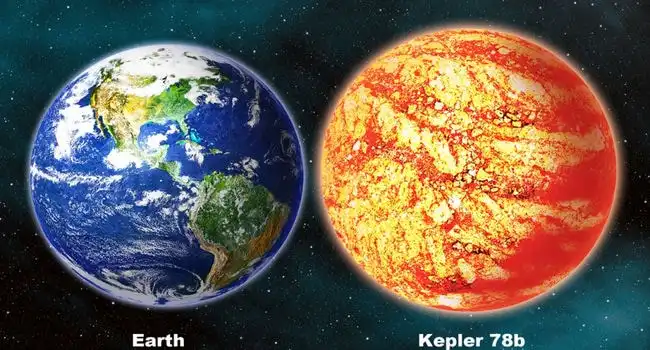
Photo Credit: Universe Today
Kepler-78b is one of the weirdest exoplanets ever discovered. It has an incredibly close orbit to its host star, making one full orbit in just 8.5 hours. With its density and mass, astronomers have determined that the planet is made of rock and iron. Its temperature is a scorching 3,600°F. Its day is only a few hours long, with night never really occurring. Kepler-78b is tidally locked, so its dayside is always facing the star and its night side is in eternal darkness. It is also the densest known exoplanet, with a mass 2.8 times that of Earth and a radius just 1.2 times that of Earth. This makes it an incredibly dense world. Its star is twice as massive as the Sun and has a much shorter lifespan, meaning Kepler-78b will soon be engulfed by its host star.
5- 55 Cancri e
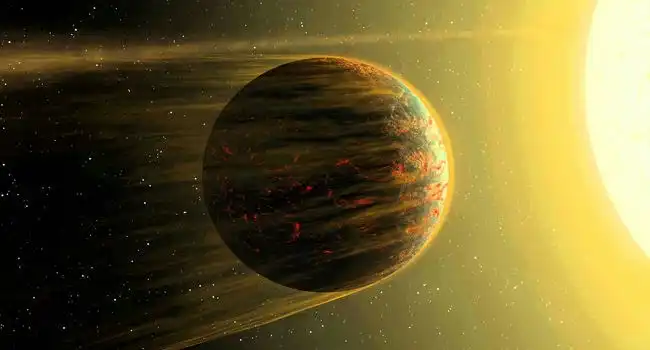
Photo Credit: Sci News
55 Cancri e is an exoplanet located 40 light years away. It is a super-Earth, twice the size of Earth and eight times more massive. 55 Cancri e also has the shortest year of any known exoplanet, only lasting 18 hours. It has a scorching temperature of 2,400 degrees Celsius.Its atmosphere is believed to be mostly hydrogen and helium. The planet is tidally locked, meaning one side is always facing its star. It orbits its star in a highly eccentric orbit, meaning it swings from being very close to its star to being very far away from it.
4- CoRoT-7b
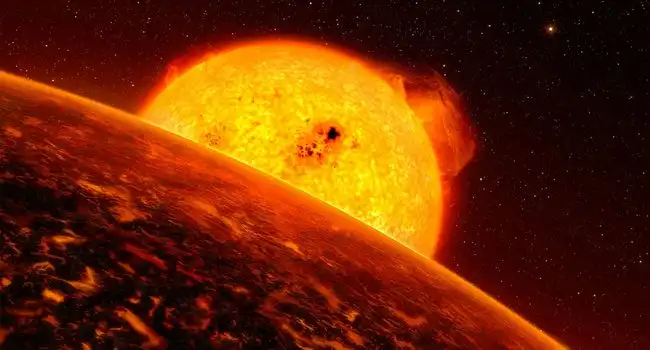
CoRoT-7b is a super-Earth located in the constellation Monoceros. It orbits a star that is about 500 light-years away from Earth. This planet is about five times more massive than Earth, and it orbits its star in a mere 20 hours! Its surface temperature is an astonishing 2,000 degrees Celsius, making it one of the hottest known exoplanets. Its density is also extremely high, making it one of the densest known exoplanets. CoRoT-7b is believed to have a solid surface composed of iron, silicate and magnesium. It is also tidally locked to its star, meaning one side of the planet is always facing the star, while the other is in perpetual darkness. This makes it one of the few exoplanets with an asymmetrical shape.
3- GJ 436b

Photo Credit: NASA
GJ 436b, one of the weirdest exoplanets, has a strange atmosphere of hydrogen, helium, and nitrogen. Its temperature is about 825 degrees Celsius, making it one of the hottest exoplanets known. Its core is composed of rock and ice, and its mass is about 22 times that of Earth. The planet’s orbit takes it around its star every 2.64 days. Its star is a red dwarf star, the smallest and coolest main-sequence stars. The exoplanet has a radius 1.5 times that of Earth and is located about 33 light-years away in the constellation Leo. It is the closest known exoplanet to our Solar System. It has an eccentric orbit, which means its distance from its star varies significantly. The exoplanet also has an atmosphere with clouds of vaporized metals, including sodium and potassium. The clouds move around the planet at high speeds, making them hard to study.
2- HD 189733
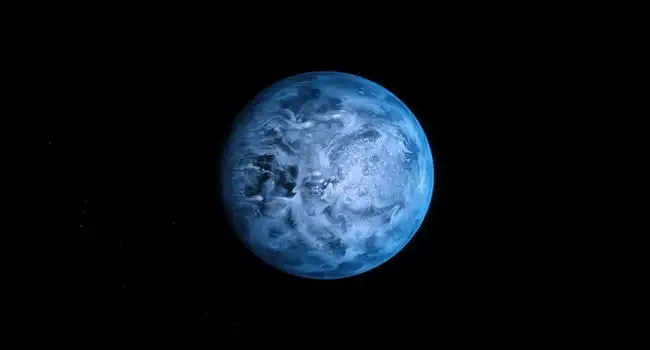
Discovered in 2005, HD 189733 is an exoplanet located 63 light-years away. It is a gas giant, similar to our own Jupiter. This exoplanet has an atmosphere that is a deep blue in color, due to the presence of silicate particles in its atmosphere. Its temperature is estimated to be 1,700 degrees Celsius, making it the hottest exoplanet ever discovered. It is also the closest exoplanet found to Earth. HD 189733 orbits a star that is much like our own Sun, and the planet completes an orbit every 2.2 days. This means that the days and nights are incredibly short on this exoplanet. HD 189733 is also known for its violent storms, with winds reaching up to 8,400 miles per hour.
1- TRAPPIST-1e
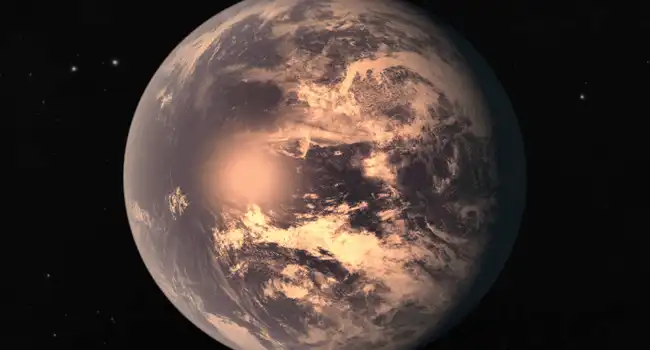
TRAPPIST-1e is a strange exoplanet located 39 light years away. It is part of a seven-planet system called TRAPPIST-1. The system is home to some of the smallest and most distant exoplanets known to humanity. TRAPPIST-1e is the fourth planet from its star and is the second smallest planet in the system. Its mass is roughly 30% of Earth’s and its density is only 0.75 that of Earth’s. It is also the hottest planet in the system, with temperatures reaching up to 500 degrees Fahrenheit. It is believed to be composed mainly of rock and iron. Despite its strange characteristics, astronomers have been able to determine that it is an exoplanet with a solid surface and an atmosphere. Its atmosphere is likely made up of carbon dioxide and nitrogen, making it suitable for life.


